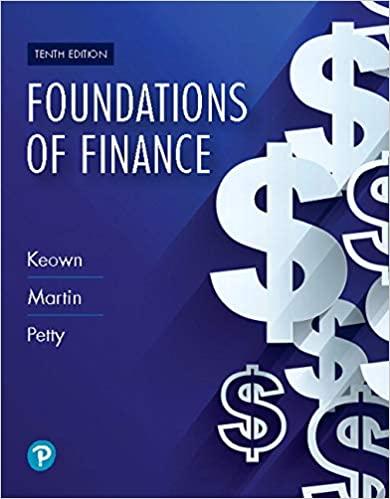Question
Straight-line depreciation is a method that charges an equal amount of depreciation for each year the asset is in service. In the case of this
Straight-line depreciation is a method that charges an equal amount of depreciation for each year the asset is in service. In the case of this purchase, straight-line depreciation would amount to $18,000 per year for 10 years. This amount is computed as follows: Step 1. Compute the cost net of salvage or trade-in value: 200,000 less 10% salvage value or 20,000 equals 180,000. Step 2. Divide the resulting figure by the expected life (also known as estimated useful life): 180,000 divided by 10 equals 18,000 depreciation per year for 10 years. Accelerated depreciation represents methods that are speeded up, or accelerated. In other words a greater amount of depreciation is taken earlier in the life of the asset. One example of accelerated depreciation is the double-declining balance method. Unlike straight-line depreciation, trade-in or salvage value is not taken into account until the end of the depreciation schedule. This method uses book value, which is the net amount remaining when cumulative previous depreciation is deducted from the assets cost. The computation is as follows: Step 1. Compute the straight-line rate: 1 divided by 10 equals 10%. Step 2. Now double the rate (as in double-declining method): 10% times 2 equals 20%. Step 3. Compute the first years depreciation expense: 200,000 times 20% equals 40,000. Step 4. Compute the carry-forward book value at the beginning of the second year: 200,000 book value beginning Year 1 less Year 1 depreciation of 40,000 equals book value at the beginning of the second year of 160,000. Step 5. Compute the second years depreciation expense: 160,000 times 20% equals 32,000. Step 6. Compute the carry-forward book value at the beginning of the third year: 160,000 book value beginning Year 2 less Year 2 depreciation of 32,000 equals book value at the beginning of the third year of 128,000.
Continue until the assets salvage or trade-in value has been reached. Do not depreciate beyond the salvage or trade-in value.
Using the format in the above Table 8A-5, compute units of service depreciation using the following assumptions: Cost to be depreciated = $50,000 Salvage value = zero Total units of service = 10,000
Units of service per year: Year 1 = 2,200; Year 2 = 2,100; Year 3 = 2,300; Year 4 = 2,200; Year 5 = 200
Using the same format, compute units of service depreciation using adjusted assumptions as follows: Cost to be depreciated = $50,000 Salvage value = $5,000 Total units of service = 10,000 Units of service per year: Year 1 = 2,200; Year 2 = 2,100; Year 3 = 2,300; Year 4 = 2,200; Year 5 = 200
Step by Step Solution
There are 3 Steps involved in it
Step: 1

Get Instant Access to Expert-Tailored Solutions
See step-by-step solutions with expert insights and AI powered tools for academic success
Step: 2

Step: 3

Ace Your Homework with AI
Get the answers you need in no time with our AI-driven, step-by-step assistance
Get Started


